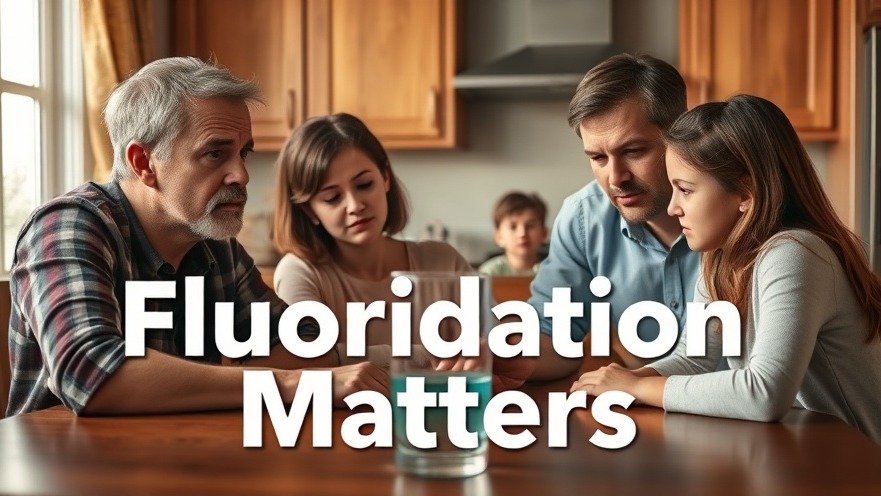
Oklahoma's Move Away from Water Fluoridation: A Significant Shift
Oklahoma Governor Kevin Stitt recently signed an executive order effectively ending the promotion of water fluoridation in the state. Announced on June 26, this decision has immediately stirred debates about public health measures and their implications, particularly as it aligns with the newly launched 'Make Oklahoma Healthy Again' initiative. This initiative, in collaboration with the controversial HHS Secretary Robert F. Kennedy Jr., marks a pivotal turn for health policy in Oklahoma.
Understanding The Context Behind the Decision
The push against water fluoridation isn't new. For years, critics have raised concerns about the potential health implications of fluoride, claiming it poses risks to cognitive development in children and overall public wellness. The order prohibits the state health department from recommending fluoride until an appointed panel provides new recommendations. However, cities and communities retain the discretion to decide whether to include fluoride in their local water systems, creating a patchwork of public health policies across Oklahoma.
The Health Advocacy Complications: A Divided Perspective
Not everyone agrees with Governor Stitt's decision. The Oklahoma Dental Association (ODA), led by Dr. Twana Duncan, has been a staunch supporter of water fluoridation as a critical measure to prevent dental caries. They argue that overreaching decisions based on unscientific grounds could reverse decades of public health progress and expose populations to greater dental health risks. This conflict between public health advocacy and political maneuvering captures the divides currently shaping health policy in the United States.
Political Ramifications of the Executive Order
The executive order is not just about fluoride; it reflects a broader ideological struggle over governmental influences on health decisions. With RFK Jr. at the helm of HHS and a vocal opponent of conventional public health measures, one must consider the ramifications of such shifts for future health policy. The transition calls into question whether evidence-based practices will remain a priority or if political ideology will take precedence in redefining standards for public health interventions.
The Historical and Ongoing Debate Surrounding Fluoridation
Fluoridation has been a contentious topic since it was first introduced in the mid-20th century. Advocates including major health organizations have touted its benefits in reducing cavity prevalence, while critics have raised alarm about possible toxicities linked to long-term consumption. This historical perspective contributes to the broader debate on how health guidelines evolve and adapt, reflecting changing societal values, scientific discoveries, and political influences.
The Role of Public Awareness in Health Decision Making
In a climate where misinformation can proliferate rapidly, public awareness and understanding of scientific outcomes are crucial. Citizens often find themselves in the crosshairs of conflicting narratives without access to clear, factual health information. As policymakers decide on controversial health measures, engaging the public with transparent, scientifically backed information becomes essential to ensure informed choices. The Oklahoma scenario illustrates the importance of community education around fluoride benefits and potential risks amidst shifting governance.
Future Implications: Examining Long-term Health Outcomes
Going forward, the implications of this state-level executive order on dental and broader health trends raise significant concerns. If unmonitored, this decision could lead to an increase in oral health issues statewide, especially among vulnerable populations who may not have access to alternative fluoride sources. How this decision impacts community dental health over the coming years will be essential data for both public health advocates and detractors.
Conclusion: The Need for Informed Dialogue and Engagement
As Oklahoma navigates these challenging waters, fostering a balanced dialogue grounded in empirical research and collective public health goals will be vital. Stakeholders must work together to share information openly and ensure that any modifications to public health policy come from a place of evidence-based consensus. Engagement and education will be key to maintaining trust within communities while safeguarding public health.
 Add Row
Add Row  Add
Add 




Write A Comment